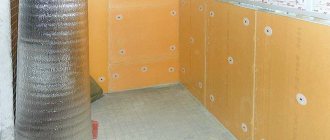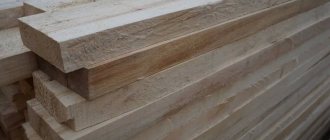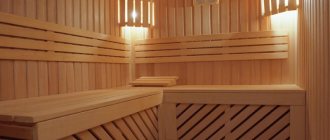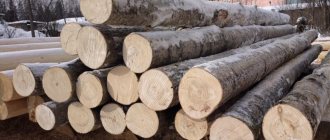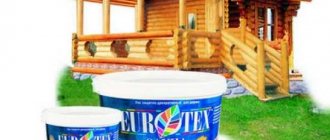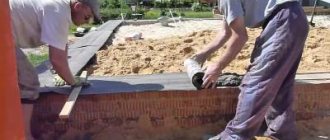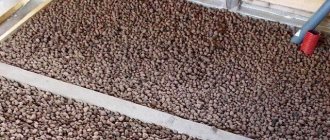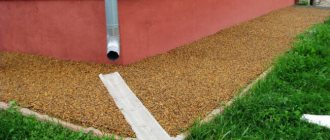Aspen is a deciduous tree. Thanks to its properties, it remains in demand, despite great competition in the construction market. The structure of the tree is soft and light, so it tolerates processing well. This is durable lumber. When dry, it is not inferior in strength even to concrete, but over time it gains weight and only becomes stronger.
Aspen lumber
Advantages and disadvantages of the material
Aspen grows in moist soil, usually increases in mass, but is often damaged by rot and disease. Under the influence of biological characteristics, the properties of the material appear. The advantages of lumber are:
- Resistant to prolonged exposure to moisture. In ancient times, shingles were made from aspen to cover the roofs of houses and important buildings. Such coatings helped provide protection for up to several decades. Even the most modern materials do not always have such durability. The maximum lifespan of tiles is up to 20 years. Also, the lower rows of log houses were previously made, since they are the ones who work in the most difficult conditions.
- Low thermal conductivity. Aspen has large distances of intercellular space, which reduces thermal conductivity.
- Manufacturability. Wood is easy to process and working with it is a pleasure. Nothing sticks to the tools, which eliminates their constant cleaning during operation.
- Strength. Dried aspen has very good strength characteristics.
For an objective opinion about aspen lumber, it is necessary to explain their disadvantages:
- Small yield of material. The tree grows in very wet soil, so its central part often rots. This reduces the yield of material after processing, also increasing the cost of timber and boards.
- Warping when drying. The high initial moisture content of the wood leads to difficulties in the process of drying it. Shrinkage reaches 20%, leaving a high probability of warping and crack formation. Drying lumber is required in compliance with all technologies and modes, only on special equipment.
Too little yield of useful products when processing wood and the undeserved low cost of aspen lumber leads to this. That few people undertake the processing of this breed. It is much simpler and, naturally, more cost-effective to give preference to coniferous species. This will require much less labor, but the profit is several times higher.
An additional reason for the small amount of aspen lumber on the market is difficulties with harvesting. This process requires specialized equipment due to the waterlogging of the wood. You can't do this all year round.
Scope of application
Like any other species, aspen can be used in many industries, but most often products made from it are used in construction and finishing, and not only in Russia.
For example, in the USA and Canada, aspen is considered a commercial species from which houses are built and high-quality furniture is made. It is indispensable in the production of such lumber as round timber, timber, boards, chipboard, and veneer.
The timber makes excellent equipment for a bathhouse, for example, benches, ladders, shelves, etc.
In our country, this wood is mostly used in interior design work, although it is suitable for use at all stages of house construction.
— Construction of log houses and small architectural forms
Lower crowns made of aspen are a guarantee that the house will last at least a hundred years without major repairs. In Rus', logs located closest to the ground were laid mainly from aspen, since it was in this case that one could be sure that they would not rot or crack over time.
Using this technology in the construction of modern wooden houses will help protect yourself from the problems that usually arise when building from pine logs (changes in the color of the wood surface, i.e. the appearance of blue, cracking, rotting, deformation).
For the same reason, professionals and knowledgeable people, when choosing a material for the construction of a bathhouse or the construction of small architectural forms in the form of gazebos, wells, small outbuildings, give preference to aspen, because they are aware of its advantages and characteristics.
— Aspen floor board
Interior decoration of saunas and bathhouses with aspen floor boards is beautiful, practical, hygienic and durable. If you don’t want the floors to turn black a few years after building your sauna, then aspen for the floor is one of the best options you can have.
In residential areas, laying aspen floorboards is an equally practical solution.
— Aspen shingles for roofing and facades
Wooden roofs and shingled facades are not very common today, and in most cases this type of finishing is chosen when constructing houses and cottages in an ethnic style, as well as during eco-construction.
If you are interested in this option for constructing a roof or finishing facades, then aspen shingles can be an excellent alternative to more expensive wooden shingles made of cedar or larch.
It will also last a long time, but costs much less. If you want to make the roof of your house different from everyone else’s, or you are looking for an unusual material for exterior wall decoration, then aspen shingles are a high quality material at an affordable price!
An example of the fact that wooden roofs are not only beautiful, but also durable, is the Kizhi Museum-Reserve.
Aspen shingles have been decorating the silvery domes of churches and bell towers, emphasizing their majesty and nobility for several centuries, confirming that traditional materials are not only not inferior to modern ones, but also surpass them in many respects!
Types of aspen lumber
Edged boards are not at all afraid of moisture, do not rot when placed in a humid environment, and dry very quickly when properly dried, after which they become stronger than conifers. These characteristics affect the areas of use of lumber. First of all, these are wooden log houses, in the first crown, since there the wood should be as resistant to rot and moisture as possible.
After drying to a moisture content of 20–22%, the board becomes very durable, comparable to concrete. It is actively used for load-bearing structures - floors, beams, etc.
Unedged board
Unedged boards have a strictly fixed thickness - no more than 25 mm. It is used for construction only under the condition that the external characteristics of the object do not play a primary role - these are formwork, fastenings, fences.
Aspen
Aspen wood is quite soft and dense. It can be easily processed with a sharp tool; it can be sawed, milled, peeled and cut. Gluing is also easy, the connection with nails is satisfactory. The surface of aspen is easy to process, but at the same time difficult to polish.
Aspen materials are marketed in the form of round timber, shavings and lumber. Despite the relatively low price, edged aspen boards have undeniable advantages. If the wood of an aspen edged board is dried and processed according to all the rules, then products made from it will be very durable. This board is moisture resistant and has a light color. This material is not subject to warping and is resistant to splitting and cracking. Due to these properties, edged aspen boards are used in the production of furniture, floors, and in the finishing of baths, steam rooms and saunas. In addition, aspen floors do not burn your feet in a hot steam room. Aspen boards are not susceptible to rotting and mold.
During the construction of log houses, the best qualities of aspen as a wood material are revealed. Having built, for example, a bathhouse, the owners will be satisfied, because the bathhouse will become practical and aesthetically pleasing. Aspen material is characterized by increased resistance to steam and wetting. Even under conditions of regular temperature changes, aspen does not crack like other softwood lumber. If you use special antiseptics, the service life of the log house will increase many times, even without additional repairs and maintenance. Proper wood treatment protects against insects and mold for a long time.
Application area of aspen wood
Light and durable dishes have long been made from aspen. To make a carved ladle or spoon, craftsmen steam the blanks in boiling water. After this, it is cut with sharp tools as easily as a turnip. They claim that cabbage soup and pickles do not turn sour in aspen dishes. Apparently, wood contains some substances that kill putrefactive bacteria. And it’s not for nothing that in some places housewives put aspen logs in sauerkraut.
Wood is also good because it lasts for a long time in water, and when dried it does not crack or warp. Therefore, from ancient times, well frames were knitted from aspen logs. You cannot find better wood for building a bathhouse: it is strong and durable, retains heat well, and does not burn the body when touched - therefore there will be no need to lay a rug on the shelves. Even in areas rich in timber, they preferred to build baths from aspen, however, such preference was given to it only where aspen trees with straight trunks and healthy wood were found.
Standing aspen is short-lived, as it is quite easily affected by heart rot. Therefore, it is necessary to cut down a tree at the age of 40-45 years.
Previously, the domes and roofs of churches and other buildings were covered with aspen ploughshare (all the domes of churches in Kizhi are covered with aspen chips), which over time became silvery from the sun and rain. Such a roof is not only beautiful, but also strong, it does not rot for a long time.
An interesting incident speaks about how strong this tree can be. Not long ago, a house was found in the Leningrad region, built more than a hundred years ago from aspen. It was preserved perfectly. The ax bounced off the dry, stone-like logs with a ringing sound.
| Scientific classification | Physical properties | ||
| Domain: | Eukaryotes | Average Density: | 450 kg/m³ |
| Kingdom: | Plants | Density limits: | 360–600 kg/m³ |
| Department: | Flowering | Longitudinal shrinkage: | 0,4 % |
| Class: | Dicotyledons | Radial shrinkage: | 3,3 % |
| Order: | Malpighiaceae | Tangential shrinkage: | 8,2 % |
| Family: | Willow | Radial swelling: | 0,13 % |
| Genus: | Poplar | Tangential swelling: | 0,25–0,31 % |
| International scientific name | Bend strength: | 76 N/mm² | |
| Populus tremula L., 1753 | Compressive strength: | 36 N/mm² | |
| Type species | Tensile strength: | 69 N/mm² | |
| Aspen | Thermal conductivity: | 0.17-0.19 W/K m | |
| Fuel properties | |||
| 19.8 MJ/kg | |||
Useful tables
Hydraulic conductivity coefficients of aspen compared to other species
| cutting direction, temperature, 0C | Aspen | Larch (core) | Birch |
| Tangential: 20 | 2,27 | 1,66 | 1,85 |
| 60 | 8,56 | 4,9 | 6,2 |
| 80 | 16,2 | 8,1 | 10,0 |
| Radial: 20 | 2,58 | 1,93 | 2,07 |
| 60 | 9,93 | 5,05 | 6,34 |
| 80 | 17,4 | 8,6 | 11,4 |
Indicators of density and conditional density of aspen
| Density when dried | 470 kg/m3 |
| Conditional density | 400 kg/m3 |
Density coefficient at different humidity levels
| Humidity level, % | Density coefficient, kg/m3 |
| 10 | 490 |
| 20 | 510 |
| 30 | 540 |
| 40 | 580 |
| 50 | 620 |
| 60 | 660 |
| 70 | 710 |
| 80 | 750 |
| 90 | 790 |
| 100 | 830 |
| In freshly cut condition | 760 (82) |
Data on the volumetric weight of aspen when its humidity changes
| Humidity percentage | Weight 1kg3 wood |
| 12-18% | 500 |
| 18-23% | 550 |
| 23-45% | 600 |
| Freshly cut | 800 |
Characteristics of aspen wood as a source of thermal energy
| Name of firewood type (in naturally dried state) | Calorific value, kcal/kg | Specific calorific value, kcal/kg |
| aspen | 4953 | 1737 |
Properties and characteristics
Aspen belongs to the extensive genus of poplars, the willow family. According to the structure of the trunk, this is a coreless, diffusely woody tree species. In Russia, this tree is found everywhere in the European and Asian parts of the country, from deciduous forests of mid-latitudes to tundra zones.
This tree grows up to 150 years, but the cause of its death is often not age, but rot that affects the core of the trunk, so trees between 30 and 50 years old are usually chosen for industrial felling. During this time, the tree reaches a height of 35-40 meters.
Aspen wood is dense, with poorly visible growth rings, and uniform in structure. The moisture content of the wood in the central part is lower than in the peripheral areas of the trunk. The color of the wood is white, grayish-white, sometimes greenish. In the cut, it is impossible to notice the rays emanating from the center. For some decorative work, such wood is valuable precisely because of its uniformity. After staining or painting, the structure of the wood remains uniform and does not reveal any structural elements.
The moisture content of a freshly cut tree is about 82%, while the maximum moisture content of this wood (when soaked) reaches 185%. With high atmospheric humidity, aspen quickly absorbs water, but also quickly loses it when drying, which is a positive quality.
In terms of resistance to biological factors, wood belongs to the lowest, fifth class (according to the ISO EN 350-3:1994 standard).
There are a total of five classes in the above standard. The first class of resistance includes, for example, Indian teak and Australian eucalyptus. Larch and oak are classified as class 2 in terms of wood stability. In Russia, the resistance of a tree to the effects of fungi and mold is determined in dimensionless conventional units. According to the Russian classification, resistance to fungi is 1.2 units for mature wood, and 1 for aspen sapwood.
Industrial felling of aspen
The international standard for industrial wood is called DIN 4076. Aspen wood belongs to group AS.
In Russia, industrial cutting of trees is carried out in wild forest plots, which are then restored naturally. In Western Europe, in recent decades, trees for industrial felling have increasingly been grown in nurseries. These are the so-called short-cycle forest nurseries. They grow primarily fast-growing tree species (poplar, aspen). This approach to environmental management makes it possible to preserve natural forests and grow wood of the required parameters.

